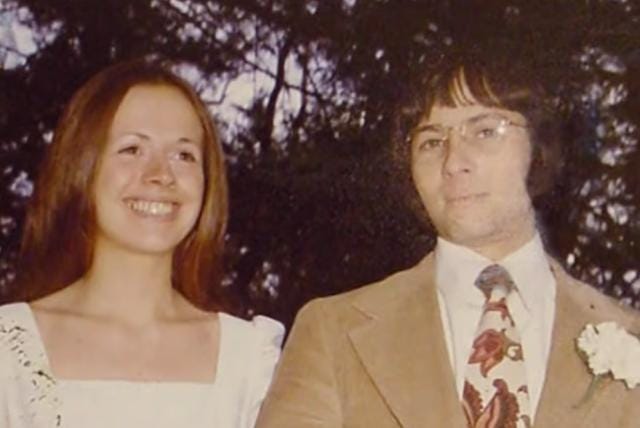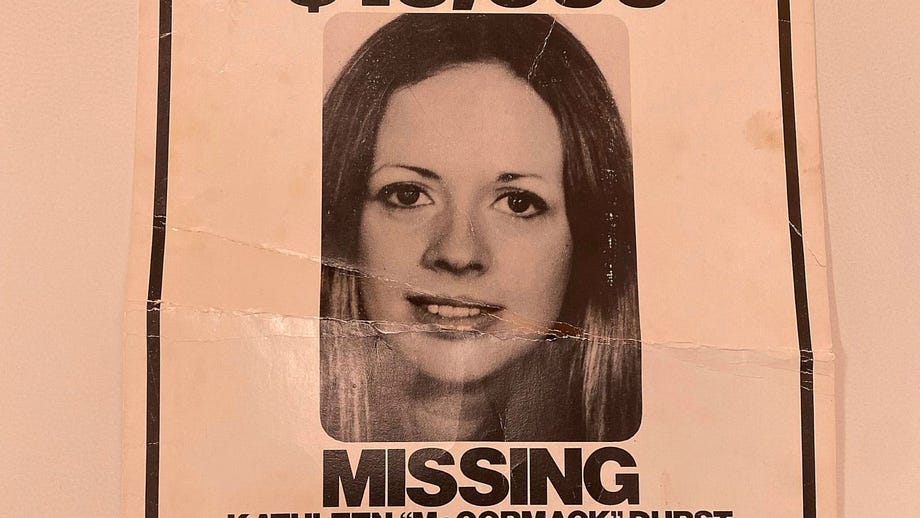A life of privilege shrouded in lies and cover-ups.

Kathleen McCormack Durst went missing on January 31, 1982. Suddenly. She had been married for nearly 9 years to Robert Durst. Most of it happy, some of it not.
Her body has never been found.
Her story started when she met her husband in 1971. At the time she was working as a dental hygienist while he was attempting to escape his billion-dollar family business by opening a health food shop in Vermont after leaving UCLA.
As soon as their paths crossed, they were inseparable and were soon living together and planning their future settled in a state far away from New York and Robert’s heritage.
But circumstances were conspiring against them. First, the small health-food enterprise failed in 1973, and then, caving into the not-so-subtle parental pressure from his CEO father, Robert Durst returned to New York and Kathleen went with him. In April of that year, they were married. And Robert took his seat at the table.

Even though he had initially resisted being brought into the organization, real estate was in his blood, was ingrained in his genes from his father and from his grandfather before him.
The Durst real estate empire was started in 1915 by Joseph Durst, an immigrant from Austria who arrived in America with just $3 in his threadbare pockets. Ambitious, and hardworking, he grew the company aggressively from the start and within 12 years had founded the Durst Organization.
He worked tirelessly to build his real estate business into a million-dollar juggernaut before handing it down to his son, Seymour Durst.
Like his father before him, Seymour’s ambition was to expand the company to even greater heights and, of course, to hand the reins of the organization down to the eldest of his four children, Robert, when it was his time to retire. Like a dutiful father, Seymour steered his eldest son in the right direction and groomed him to sit in the big chair one day.
Robert Durst was sent to the best schools, studied hard, and got a bachelor’s degree in economics before dropping out. Still, his father understood that the best way to really learn the business was to be in the business, and was pleased when Robert finally entered the organization in 1973, aged 30.
Returning from Vermont, Robert immersed himself fully into learning the business from the ground up, dutifully preparing himself to take over the operations one day when his father stood down.
But where his business was progressing well his marriage, however, was soon on shaky ground, far less stable than the foundations of his buildings; arguments, fights, and bruises witnessed by friends and colleagues on a regular basis bore witness to the demise of his relationship.
Divorce was looming, Kathleen wanting out and a fair settlement, Durst reluctant to surrender any of his fortune, even going so far as canceling her credit cards.
Things were turning nasty. Kathleen’s family knew it and feared for her safety on more than one occasion.
The night she disappeared was after a party that they had both attended. Both of them were cordial in public, while privately they had been living in separate accommodations for the last three years.

Nevertheless, within a few days of her going missing, Durst posted a reward of $100,000 for any information leading to her whereabouts. It was never collected, and 8 years later Robert Durst officially divorced her on the grounds of spousal abandonment.
Her family had their suspicions, her mother and sister convinced that Durst had murdered her.
But with no body, and no proof, there was no case.
The police had nothing to follow up on either, no clues, and an alibi from Durst’s long-time friend, Susan Berman, helped to halt any further investigations.
Then a few years later there came a twist to the case. But was there a connection to the missing Kathleen McCormack Durst?
The incident occurred on December 24, 2000, when Susan Berman, the person who had diverted any murderous suspicions away from Durst, was found dead in her Californian home, killed execution style, a bullet to the back of the head.

Was her death suspicious? Definitely. Was it connected to Robert Durst? Maybe, maybe not.
What muddied the waters was the fact that Berman’s father was reportedly a gangster back in the 1940s in Las Vegas, operating the Flamingo Casino that was well known for having underworld connections. Perhaps her death was related to the criminal enterprises of her father’s business interests.
That could well have been the direction that the LAPD focused their investigation if not for the discovery of the wire transfer. A quick examination of her bank records revealed the recent transfer of $50,000 from Robert Durst, who, it had transpired, had also been in California days before her body was discovered.
With nothing to hide, Durst admitted wiring money to his friend who, he explained, was having financial problems. But when the LAPD began to question him further about any possible connections to his ex-wife’s disappearance, he declined to answer any more questions.
Now, back in New York, Kathleen McCormack Durst’s family had pressured the police to re-open the investigation into her disappearance even before hearing about the death of Susan Berman.
Robert Durst, recently remarried, and notified that the old case was active once again, went underground in Galveston, Texas, going into hiding to avoid further scrutiny.
And then events took an even more bizarre turn.
Durst, returning one night under cover of darkness to his apartment in Texas, found his neighbor, Morris Black, relaxing in his chair, watching his tv, and eating his food. Durst was shocked, then incensed, then he killed him.

But that wasn’t even the bizarre part.
Realizing how this would look to the authorities, what with police in two states looking at him for two possible murders, he decided to expertly chop up Black’s body, secure the limbs and torso in garbage bags, and throw them into Galveston Bay.
The grisly body parts were soon discovered, the trail leading straight back to him. He was promptly arrested, and, when questioned by the authorities, he would later claim it was self-defense. Black’s death occurred, he explained, accidentally when he was fighting for his life after Black had pulled a gun on him.
There were no witnesses to his accidental discharge self-defense story, so he was allowed out on bail while further investigations were conducted — and then he promptly went on the run.
It took six weeks to recapture him, and in 2003 at the age of 60, he was put on trial for the murder of Morris Black. The jury, amazingly, believed that the frail old man before them had feared for his life in his altercation with Black, and he was acquitted.
He did serve a few months for skipping bail and a few minor offenses, but he was as free as a man could be who had just killed and dismembered another person.
His good luck continued when a settlement of $65 million came his way in 2006 after suing the Durst Organization. The claim was that he had wrongfully been cut out of his inheritance, which was true. At the time his father had lost confidence in his eldest son due to the negative media attention surrounding his ex-wife’s disappearance. and had appointed his second eldest son, Douglas, as his successor in 1994.
Although Durst had never wanted to be in the business, he nevertheless wanted the money.
And he knew he had to protect it.
With that in mind, he made sure that everything he owned was placed under the name of his wife, Debrah Lee Charatan. Their marriage was one of convenience, true, but she was there when he went on trial for Black’s murder.

After he was acquitted, she distanced herself from him somewhat over the years but strongly cautioned him a few years later against going through with a planned documentary based on his life with HBO.
He ignored her advice.
The unrestricted interviews began in 2010, culminating in 2012, with the intention of airing the six episodes from February 2015.
Robert Durst should have listened to his wife.
What the filmmakers of the show heard while combing through hundreds of hours of recordings, shocked even them, and they knew it would be tv gold. A previous hot mike moment inadvertently recorded off-camera in 2012 but not heard until years later, damned Durst.
On it, unaware that his mike was still live, he could clearly be heard admitting to murdering Kathleen McCormack, Susan Berman, and Morris Black.
The evidence was handed over to the FBI and Durst was arrested in March 2015.
Opening statements for the trial didn’t start until 2020, with the now frail 76-year-old Robert Durst still refusing to admit in a court of law that he had killed his ex-wife. So, with the murder of Morris Black also behind him, he was sentenced to life in prison in 2021 just for the murder of his friend, Susan Berman, who, it transpired, had tried to squeeze more money out of him in a blackmail attempt.
After decades of getting away with murder, he was finally being taken down by a careless whisper.

The show was called “The Jinx” and it definitely brought back luck to Robert Durst. His life of privilege and escaping justice for decades was unceremoniously brought to an end by his overinflated ego.
If he had refused to do the show, if he had stayed out of the spotlight for a few more years, he wouldn’t have died as a prisoner in San Joaquin General Hospital in California at the age of 78, a sad and lonely old man.
